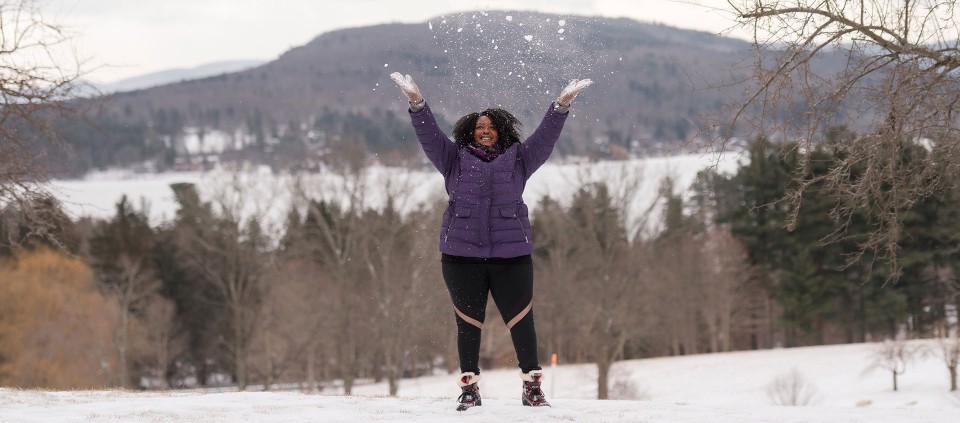Ayurveda for Warding Off Seasonal Affective Disorder

Between 2 and 10 percent of people experience Seasonal Affective Disorder (SAD) in winter, and scientists have an explanation for this affliction: It’s because we wake up in the dark. In winter, our bodies naturally produce more melatonin in response to the shorter daylight hours. Melatonin is the hormone responsible for sleep, and it turns off at the first light of dawn. Because we tend to get up at the same time all year, during winter we wake up in the dark and our melatonin doesn’t calibrate properly—causing the depression and sluggishness characteristic of SAD. New research suggests that if we actually got up a little later, when the sun was out, SAD would be much less common.
If you have a job that is flexible and you can adjust your schedule to the sunrise, experiment with waking up without an alarm and with the sun. Then evaluate how you feel. And don’t be afraid to go to bed earlier; in my house, we are in bed around 8:00 pm in the winter and 10:00 pm in the summer. Because we tend to sleep more in winter, going to bed earlier doesn’t necessarily mean that you’ll wake up earlier.
Why do we sleep more at this time of year? Ayurveda describes winter as the brmhana, or building, season. It’s the time to go inward, be more still, do more meditation, rest more, and eat more warming, nourishing foods. In contrast to the light, leafy, cooling vegetables of summer, the foods that humans have stored and eaten in winter for centuries—root vegetables, grains, legumes, meats, dairy, and cheeses—help to build a strong body.
Four Winter Tips Inspired by Ayurveda
Ayurveda is based in the five elements, and follows the rhythms of the sun and moon, inviting us to live in closer attunement with nature. Here are four ways to align with winter.
Fire: If you have a woodstove or fireplace, build lots of fires. This will connect you to a natural source of light and heat, which I find helpful when I miss the warmth of the sun. If you don’t have a fireplace, light more candles, or considering purchasing a small electric fireplace. I like to eat by the fire, read by the fire, and sit and talk around the fire.
Food: I cook more in winter, partly because I’m home more, and partly because most winter foods need to be cooked. I get really excited about soups and stews. If you have kids, involve them in the cooking, so they can start to connect more intimately with food from beginning to belly. Make meals that are nourishing and warming; avoid cold and raw foods.
Fun Outside: I am so much happier when I get out for a walk, hike, or snowshoe. It’s the monotony of being inside that gets me down. Fresh air and a change in scenery are good medicine. Which brings me to my last suggestion …
Face Cover: This one winter accessory changed my life. No joke. I have two, and wouldn’t mind having the whole collection. It seems simple, but it makes my experience outside so much warmer. I have tried many scarfs, buffs, and neck warmers, but nothing beats my Skida. I love that it covers my face, yet I can breathe freely. Give it a try and see if it transforms your experience of winter!
Erin Casperson, Lead Kripalu Faculty and Director of the Kripalu School of Ayurveda, is passionate about sharing how the ancient practices of Ayurveda can be applied to modern-day living.
Full Bio and Programs